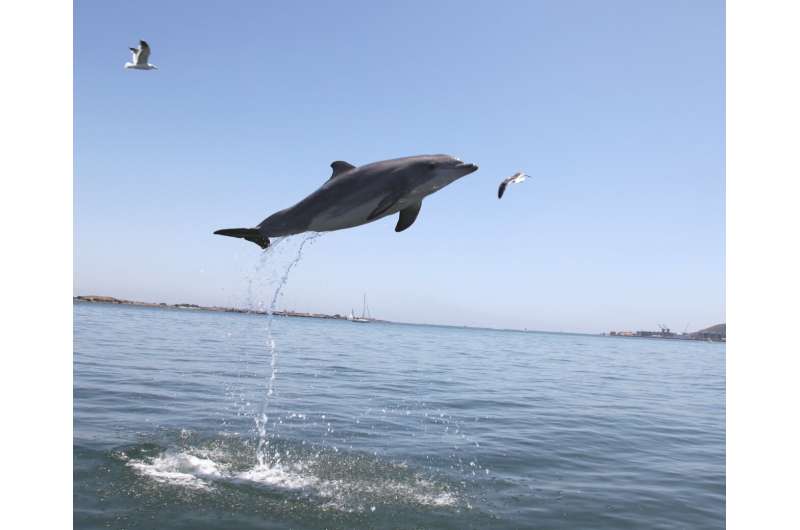August 11, 2020 report
Dolphin study shows mammals age at different rates

A team of researchers from Epitracker, Inc. and Seraphina Therapeutics, Inc., working with the U.S. Navy Marine Mammal Program, has found that dolphins age at different rates. In their paper published in Proceedings of the National Academy of Sciences, the group describes their study of captive dolphins over a 25-year period and what they learned about them.
The U.S. has been working with dolphins for several decades. They have found that dolphins can be used to detect mines, deploy and retrieve equipment, and serve as spies in adversarial territorial waters. To assist in their efforts with dolphins, the U.S. Navy Marine Mammal Program was established, in which teams of dolphins are domesticated and live most of their lives in protected areas. They are also fed well and receive medical care. This has led to longer lifespans—in some cases, twice as long as dolphins in the wild. In studying the dolphins over two and a half decades, the researchers have discovered that as dolphins grow older, they develop many of the same age-related conditions as humans. This has led the researchers to study dolphin aging to learn more about human aging. The advantage the team has with the dolphins is the pristine environment—all of the dolphins live in the same place, eat the same food, and engage in the same activities. This has allowed the researchers a unique perspective on long-term aging.
As part of their study, the researchers have been collecting blood samples from the dolphins, and have found four age-related biomarkers—physical biological factors that change as the dolphins age. Those found involved changes to hemoglobin (proteins that hold iron), lymphocytes (types of immune cells), platelets (fragments of cells that result from clotting blood), and alkaline phosphatase (an enzyme that can be used to monitor bone or liver disease). They also found there were differences in the degree of change shown by the biomarkers, evidence of differences in the pace of aging in the dolphins.
The researchers suggest that because dolphins are quite similar to humans, it might be possible to develop therapies to slow the aging process by targeting those parts of the body found to be slowing as shown by the biomarkers.
More information: Stephanie Venn-Watson et al. A 25-y longitudinal dolphin cohort supports that long-lived individuals in same environment exhibit variation in aging rates, Proceedings of the National Academy of Sciences (2020). DOI: 10.1073/pnas.1918755117
Journal information: Proceedings of the National Academy of Sciences
© 2020 Science X Network




















